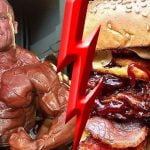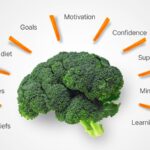
Introduction
As a new mother, breastfeeding provides essential nutrients and bonding opportunities with your baby. However, some mothers may find that their babies experience discomfort or fussiness after nursing. In such cases, it’s possible that the baby is reacting to something the mother is consuming. One common concern is whether a dairy-free diet while breastfeeding can alleviate these issues and promote a happier, healthier breastfeeding experience. In this article, we will explore the benefits, considerations, and tips for following a dairy-free diet while breastfeeding.
Understanding Dairy Allergies in Infants
Dairy allergies are relatively common in infants and can manifest as colic, gas, bloating, or skin rashes. Proteins in cow’s milk, such as casein and whey, can be the culprits behind these reactions. When breastfeeding, these proteins may pass from the mother’s diet to the baby through breast milk. Hence, a dairy-free diet might be necessary to determine if the baby’s symptoms improve.
Identifying Symptoms in Breastfed Babies
Recognizing the symptoms of dairy allergies in breastfed babies is crucial for understanding whether a dairy-free diet is needed. Some common signs include excessive crying, irritability, eczema, hives, or vomiting after feeding. If your baby displays these symptoms consistently, it may be time to explore a dairy elimination diet.
What is a Dairy-Free Diet?
A dairy-free diet involves avoiding all dairy products, such as milk, cheese, butter, and yogurt. It also means checking food labels for hidden dairy ingredients in processed foods. While it may seem challenging, many alternatives are available that offer similar nutritional benefits without dairy.
Benefits of a Dairy-Free Diet for Breastfeeding Moms
For breastfeeding mothers, adopting a dairy-free diet can have several benefits. It can lead to a happier, more comfortable baby with reduced colic and digestive issues. Additionally, some nursing mothers find relief from lactose intolerance symptoms or other sensitivities when removing dairy from their diets.
Safe Alternatives to Dairy Products
Fortunately, there are numerous dairy-free alternatives readily accessible in grocery stores. Plant-based milk, such as almond, soy, or coconut milk, can be used as substitutes for cow’s milk. Non-dairy butter and cheese options are also available, offering a range of flavors and textures.
Reading Labels and Avoiding Hidden Dairy
When following a dairy-free diet, it’s crucial to become a vigilant label reader. Dairy can often be hidden in unexpected products, such as baked goods, sauces, and processed snacks. Familiarize yourself with common dairy-related terms on ingredient lists to avoid accidental consumption.
Meal Planning for a Dairy-Free Diet
Meal planning becomes essential when adopting a dairy-free diet. Designing balanced meals that meet nutritional requirements is vital for both the mother and the breastfeeding baby. Incorporating a variety of nutrient-rich foods will ensure that both of you are receiving proper nourishment.
Maintaining Proper Nutrition while Dairy-Free
Eliminating dairy from your diet shouldn’t mean sacrificing essential nutrients. To maintain proper nutrition, focus on incorporating fruits, vegetables, whole grains, lean proteins, and healthy fats into your meals. Consulting with a registered dietitian can provide personalized guidance on maintaining a healthy dairy-free diet.
Seeking Professional Guidance
Before starting a dairy-free diet while breastfeeding, consult with a healthcare professional or a lactation consultant. They can help determine if your baby’s symptoms are genuinely related to dairy and guide you through the process of eliminating dairy while ensuring optimal nutrition for both you and your baby.
Tips for Coping with Cravings
Cravings for dairy products can be challenging to manage, but there are strategies to help cope with them. Experimenting with dairy-free recipes, finding tasty alternatives, and reminding yourself of the benefits to your baby can be powerful motivators to stick with the diet.
Dealing with Dairy in Your Environment
Apart from dietary changes, consider potential sources of dairy in your environment. For example, if you have older children who consume dairy, ensure they wash their hands and faces after eating to minimize contact with your breastfeeding baby.
Combining a Dairy-Free Diet with Other Allergen Eliminations
In some cases, infants may have allergies to multiple substances. If this is a concern, work with a healthcare professional to identify and eliminate other potential allergens, one at a time, to pinpoint the cause of your baby’s discomfort accurately.
The Connection Between Dairy and Colic
Colic can be distressing for both babies and parents. Research has shown a potential link between cow’s milk proteins and colic in some infants. By adhering to a dairy-free diet, you can assess whether cow’s milk is contributing to your baby’s colic symptoms.
Introducing Dairy to Your Baby
As your baby grows, you may wonder when and how to reintroduce dairy into your diet and theirs. Gradually introducing cow’s milk products to your child’s diet after consulting with a pediatrician can help monitor for any recurring symptoms.
Conclusion
A dairy-free diet while breastfeeding can be a game-changer for both mother and baby. By being attentive to your baby’s symptoms and taking proactive steps to eliminate dairy, you can create a more comfortable and enjoyable breastfeeding experience. Remember to seek professional advice, stay committed to proper nutrition, and embrace the various dairy-free options available. Happy breastfeeding!







